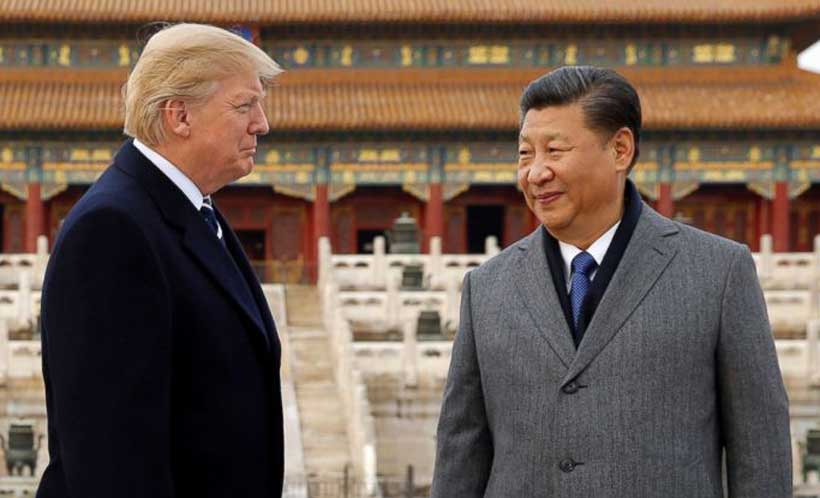With oil prices soaring high with a geopolitical risk premium back in markets, the U.S.-China trade talks have taken a step back. However, as soon as this temporary spike settles down (as it seems to be), the question for crude markets and global economy will be how effective the Phase One agreement will prove. A study of past trade talks indicates that the prospects of getting an answer for this question might not be that easy. But meanwhile have “things changed”?
Consider the buildup to the current status: There have been more or less 13 meetings between the world economic juggernauts – China and the U.S. share a total of 40 percent of global GDP –to resolve their economic scrum. Trump has manifested his characteristic whimsical spells shifting from Panglossian optimism to Cynic pessimism. Chinese negotiators have reciprocated the fickleness but nevertheless have played along well. Recently, after the half-cooked “Phase One” (or mini deal), many observers and analysts are betting on a more comprehensive trade deal.
The 15th December tariffs of $160 bn have been delayed. Tariff rate on $120 bn of goods (imposed on September 01, 2019) have been reduced from 15 percent to 7 percent. Other tariffs of $250 bn with a rate of 25 percent still remain. China has promised, according to U.S. officials to purchase goods and services of about $200 bn over two years. However, this might not be that simple.
There are different variables here to consider. Clyde Russell in a trenchant piece for Reutersexplains in detail about these assumptions. An assumption that China would buy about $200 bn more goods from US is quite optimistic. Not to mention that the Phase One agreement has a snapback clause which means that upon quarterly reviews if the Chinese side isn’t holding true to their promises the agreement can become null and void.
Even if China fulfills its promise it won’t reduce U.S. deficit with China by any significant amount. U.S.’ trade deficit with China for the first 10 months of 2019 was $294 bn or 40 percent of the country’s total trade gap. However, for the same period, Chinese sold goods more than four times (of about $382 bn). China needs to half its current exports to the U.S. for a “meaningful” drop in the deficit- something that seems highly unlikely.
Also, the only room China has to ramp up its purchases is agricultural products. However, the recent outbreak of swine flu has led China to herd down its pig population therefore, low demand for soybeans. Also, Brazil, that has been a beneficiary of trade war, will not easily lose their market share and might reduce down prices, giving U.S. farmers a tough time.
Many observers are also pointing towards the language of the official statements. For one not much detail has been shared on the agreement; that consists of 86 pages according to U.S. officials. The U.S. administration is emphasizing Chinese promises of buying more from them while China isn’t that categorical. Chinese media said that the agreement was based on “principle of equality and mutual respect” and that as Chinese markets expands it will lead to “increasing imports of goods and services from abroad”.
Crude oil is another commodity where China can buy more volumes. However, much will then depend upon the price of oil which due to various factors, chief amongst a relatively slow demand, is expected to remain under pressure. China has already been importing record amounts of crude this year, 11.13mbpd in November 2019, with an average of 10.09 mbpd; 10 percentmore than the same time last year.Rex Preston Stoner, a security and geopolitical consultant based in Francenotes, “The Chinese and the U.S. are approaching this issue from diametrically opposed viewpoints. Without getting lost in the details, the Chinese negotiators systematically adhere to principles of strategic patience while grappling with foreign affairs while the current U.S. administration has no apparent systematic or strategic approach whatsoever.”
Most importantly, the Phase One agreement doesn’t address two very important changes in Chinese cyber laws. The first one is Multi-Level Protection 2.0 (implemented on December 1) and second is the Cryptography Law (that will go into effect by 1st January). Both of these rules will prohibit foreign companies from encrypting their data hence giving access to sensitive information to the Chinese. This can become a deal breaker!
As the element of human agency dominates the negotiation table and that the two people who will finally decide the fate of the trade talks cannot afford to look weak, the prospects of a final deal remain elusive. We may have aPhase One deal but it wouldn’t serve the purpose —we have been there before (Last November G20 meeting, both leaders ended the year on a very positive note). Read between the lines and we might have to reconsider our optimism regarding the end of trade war.


